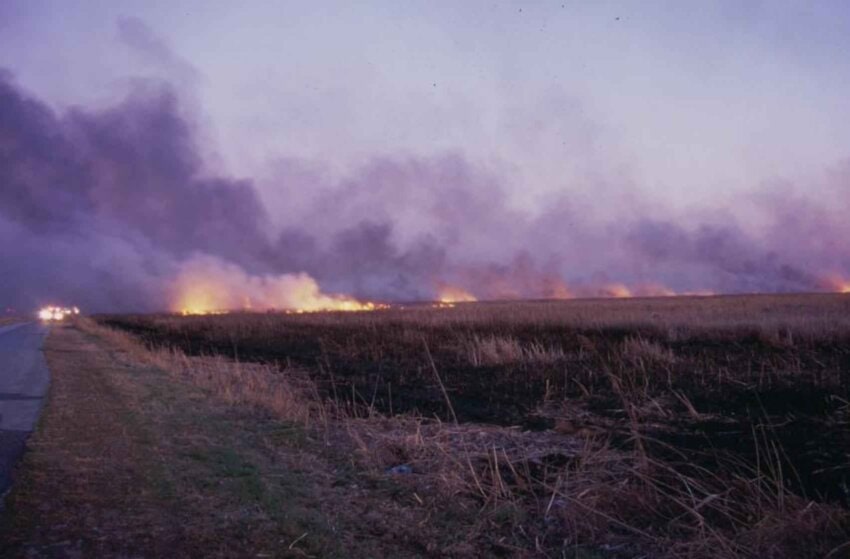
You may have seen that a film adaptation of Don DeLillo’s postmodern classic White Noise is being released later this year. The main story device in DeLillo’s story is a chemical spill that leads to something dubbed “the airborne toxic event,” a black cloud that hangs over the town and forces a full evacuation.
While White Noise is a work of fiction the threat of airborne toxic events is something that towns and cities around the world may soon be forced to confront. The cause? Grid storage facilities full of lithium-ion batteries.
As we move away from fossil fuels and toward renewable sources of power generation, we need a way to store energy for times when the sun isn’t shining and the wind isn’t blowing. Enter grid storage. These massive installations of battery systems storage excess energy from the grid and make it available for times when demand exceeds supply. They’re a vital part of our clean energy future. And right now, most of those batteries are based on lithium-ion technology.
While generally safe under normal conditions, lithium-ion batteries (including LFP / LiFePO4) can quickly catch fire if they get too hot or suffer physical damage. The liquid electrolytes inside the battery cells can quickly catch fire when exposed to high temperatures or ignition sources, and lithium battery fires burn hot and fast. Once a lithium battery fire starts it’s notoriously hard to extinguish, and burning lithium batteries can release range of toxic (and potentially deadly) substances into the environment.
One of the biggest dangers is hydrogen fluoride (HF) gas, which converts to hydrofluoric acid. At low levels HF gas can irritate the eyes, nose, and respiratory tract; at high levels it can cause permanent blindness, chronic lung disease, or even death from an irregular heartbeat or fluid buildup in the lungs. Hydrochloric acid can cause similar problems if inhaled, and both acids are corrosive to the eyes in skin in liquid form.
So how do we prevent a real-world airborne toxic event? It’s relatively easy. Municipalities need to demand that new grid storage installations take advantage of battery technologies that are less flammable and less toxic. Some of these technologies already exist, including flow and zinc-based batteries. Others will be available soon, such as the kind we’re developing at Alsym Energy. But nothing is likely to change until the public starts to better understand the dangers that may be coming soon to their neighborhoods and push their local utilities and government officials to demand that more attention is paid to the safety of the batteries being used.






